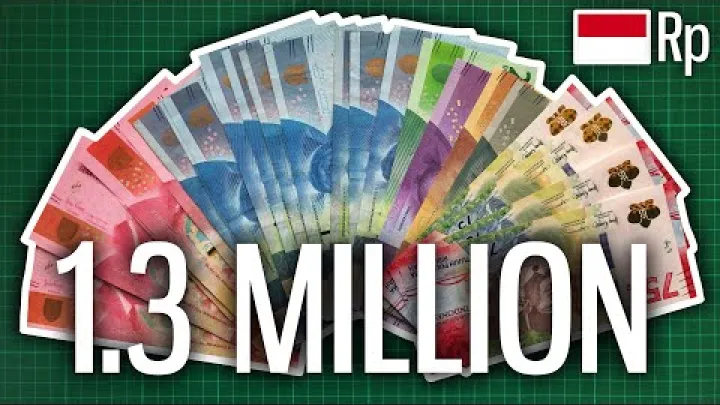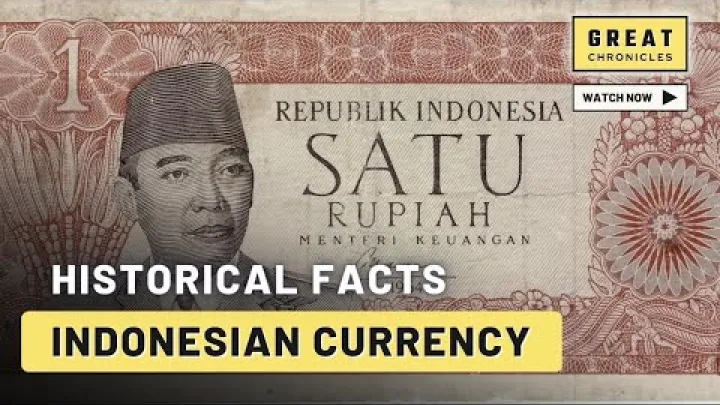Understanding Indonesian Currency: Essential Guide for Travelers and Business Visitors
Indonesia uses the Rupiah (IDR) as its official currency. Whether you're planning a vacation to Bali, a business trip to Jakarta, or simply interested in international currencies, understanding Indonesian money is essential for smooth financial transactions during your visit.
Indonesian Currency Basics
The Indonesian Rupiah (IDR) is represented by the symbol "Rp" and comes in both coins and banknotes. The currency code "IDR" is used for international exchanges and banking. Bank Indonesia, the country's central bank, regulates and issues the rupiah.
Exchange rates fluctuate daily, but understanding approximate values helps with budgeting:
- 1 USD = approximately 15,500-16,000 IDR
- 1 EUR = approximately 16,500-17,000 IDR
- 1 AUD = approximately 10,000-10,500 IDR
Why People Search About Indonesian Currency
Data shows that "Indonesia currency to USD" and "Indonesia money" are among the most frequently searched terms related to Indonesian finance. This reflects travelers' needs to understand conversion rates for budgeting purposes and business professionals' requirements for international transactions.
Other popular searches include comparisons between the rupiah and regional currencies like the Philippine Peso, Indian Rupee, and Malaysian Ringgit, highlighting Indonesia's importance in regional travel and commerce.
Banknotes and Coins
Banknotes in Circulation
Indonesian rupiah banknotes come in several denominations, each with distinct colors and designs:
- Rp 1,000 (gray/green) - Features Captain Pattimura
- Rp 2,000 (gray/purple) - Features Prince Antasari
- Rp 5,000 (brown/olive) - Features Dr. K.H. Idham Chalid
- Rp 10,000 (purple) - Features Frans Kaisiepo
- Rp 20,000 (green) - Features Dr. G.S.S.J. Ratulangi
- Rp 50,000 (blue) - Features I Gusti Ngurah Rai
- Rp 100,000 (red) - Features Sukarno and Mohammad Hatta
All banknotes include security features such as watermarks, security threads, and microprinting to prevent counterfeiting.
Coins in Circulation
While less frequently used, Indonesian coins are still in circulation:
- Rp 100 (aluminum)
- Rp 200 (aluminum)
- Rp 500 (nickel-plated steel)
- Rp 1,000 (bi-metallic)
Exchanging Currency
Best Places to Exchange Money
- Authorized Money Changers: Look for establishments with "Authorized Money Changer" signs for better rates than hotels or airports.
- Banks: Major banks like Bank Mandiri, BCA, and BNI offer reliable exchange services with competitive rates.
- ATMs: Widely available in urban areas and tourist destinations, ATMs often provide good exchange rates. Look for ATMs connected to international networks like Cirrus, Plus, or Visa.
Exchange Tips
- Compare Rates: Exchange rates vary significantly between services. Check current mid-market rates before exchanging.
- Avoid Airports and Hotels: These typically offer less favorable rates.
- Bring Clean, Undamaged Bills: Many money changers reject damaged or older foreign currency notes.
- Count Your Money: Always count your rupiah before leaving the exchange counter.
Digital Payments and Money Transfers
Indonesia has embraced digital payment solutions, especially in urban areas:
Payment Methods
- Credit/Debit Cards: Widely accepted in hotels, shopping malls, and restaurants in tourist areas, though less common in rural locations.
- Mobile Wallets: Apps like GoPay, OVO, and DANA are increasingly popular for payments in Indonesia.
International Money Transfers
For sending money to or from Indonesia, several services are available:
- Wise: Generally offers competitive exchange rates with transparent fees (typically 0.5-1.5%)
- Remitly: Good for larger transfers with fees ranging from 1-3%
- Western Union: More pickup locations but typically higher fees (2-4%)
Consider transfer speed, fees, and security when choosing a service.
Practical Money Tips for Travelers
How Much Cash to Carry
Indonesia remains largely cash-based, especially outside major tourist areas. Consider these daily budgets:
- Budget traveler: Rp 500,000-800,000 ($32-52) per day
- Mid-range traveler: Rp 800,000-1,500,000 ($52-97) per day
- Luxury traveler: Rp 1,500,000+ ($97+) per day
Tipping Practices
Tipping isn't traditionally expected in Indonesia but is appreciated in tourist areas:
- Restaurants: 5-10% if service charge isn't included
- Hotel staff: Rp 10,000-20,000 for porters
- Tour guides: Rp 50,000-100,000 per day for good service
Common Price Points
Understanding typical costs helps with budgeting:
- Street food meal: Rp 15,000-30,000
- Mid-range restaurant meal: Rp 50,000-150,000
- Bottled water (1.5L): Rp 5,000-10,000
- Short taxi ride: Rp 25,000-50,000
- Budget hotel room: Rp 150,000-300,000
- SIM card with data: Rp 100,000-200,000
Regional Purchasing Power
Understanding how the rupiah compares to neighboring currencies helps with budgeting:
- Philippines: 1 PHP ≈ 275 IDR
- Malaysia: 1 MYR ≈ 3,400 IDR
- India: 1 INR ≈ 190 IDR
This means Indonesia is generally more affordable for visitors from Malaysia but similar in cost to India and slightly more expensive than the Philippines.
Historical Context and Future Outlook
Key Historical Developments
The rupiah has experienced significant changes:
- 1997-1998 Asian Financial Crisis: The rupiah lost over 80% of its value
- 2008 Global Financial Crisis: 30% depreciation against the USD
- 2020 COVID-19 Pandemic: Significant depreciation as global markets reacted to economic uncertainty
Future Outlook
Economic forecasts suggest:
- Short-term: Relative stability with potential fluctuations against major currencies
- Medium-term: Gradual changes based on inflation differentials
- Long-term factors: Indonesia's growing economy and increasing foreign investment may influence currency strength
Security Advice
- Keep money secure: Avoid displaying large amounts of cash in public
- Use hotel safes for storing excess currency
- Keep small denominations accessible for daily purchases
- Be aware of counterfeit notes, especially larger denominations
- Inform your bank of travel plans to prevent card blocks
Final Tips
- Learn basic Indonesian phrases related to money and numbers
- Download a currency converter app before your trip
- Keep some emergency USD or EUR as backup
- Be prepared for the large number of zeros on Indonesian banknotes—it's easy to miscount!
Understanding Indonesian currency will enhance your travel experience and help you navigate financial transactions with confidence. With proper planning and awareness, managing money in Indonesia can be straightforward and stress-free.
Your Nearby Location
Your Favorite
Post content
All posting is Free of charge and registration is Not required.





